Fixed Systems
Industry
Specialty Products
Gas Monitoring for Sterilization Process – H2O2, ClO2, O3 Detection
With the COVID-19 pandemic there has been an increase in disinfecting and sterilizing processes worldwide. Most of these processes include conditioning an area or an item with a desired concentration to perform the sterilization phase. Hydrogen peroxide, chlorine dioxide, and ozone are mainly used in this application.
RKI Solutions |
|||||
CO2 Gas Monitoring for Concrete Suppliers
There are 2,100 Ready Mix concrete suppliers in the US. They provide the foundation for much of our buildings and roadways. It is becoming more common to inject the concrete with carbon dioxide during the mixing stage. Once injected, the CO2 undergoes a mineralization process and becomes permanently embedded, while shortening the cure time and increasing the concrete’s compressive strength.
Ready Mix Concrete companies (RMC’s) are required to enter the central mix drum in between wet batch cycles to clean them out and perform routine maintenance. These activities involve confined space entry and this industry has been a long time user of our four-gas personal portable instruments. Many of these users feel that a four-gas instrument is sufficient because they will see a drop in oxygen as CO2 accumulates. The problem with this logic, though, is that CO2 is toxic long before it displaces enough oxygen to put that channel in alarm. 5,000 ppm CO2, the TLV, is just 0.5% volume. In otherwise fresh air, the oxygen channel will read 20.8% volume, instead of 20.9% volume – nowhere near an asphyxiation hazard alarm. In fact, the IDLH for CO2 is 4% volume, so even if the CO2 level reaches that point, it will only cause a reading of 20.1% volume oxygen. So even when there is an immediate danger from the CO2, the oxygen reading is still far away from an alarm condition.
RKI Solution
Our GX-3R Pro is ideally suited to address these hazards. In addition to the standard confined space gases: LEL, O2, CO and H2S, the GX-3R Pro is also available with a specific CO2 sensor. The CO2 sensor specifically detects low levels of the CO2 associated with Ready Mix Concrete instead of relying on higher CO2 levels to trigger an O2 alarm.
References:
To learn more about the process visit www.carboncure.com
List of top RMC’s in the country
Resources:
GX-3R Pro Datasheet
Click HERE for PDF of this announcement
Vehicle Maintenance Gas Detection


In addition to needing to comply with The International Fire Code, numerous National Fire Protection Association (NFPA) codes, and local fire codes, most facilities require various agency approvals for the installed gas detection system.
Typical Facilities Needing Gas Detection
RKI Solution
A Beacon controller mounted on the wall and connected to our flammable transmitters with remote mount sensors does the trick. Propane is heavier than air, so it collects near the floor, Natural gas and Hydrogen are lighter than air, so they collect near the ceiling. Our remote sensors can be located near the ceiling or floor, depending on which gas needs to be detected.
Our Beacon controllers have relays that can control lights, horns, bay doors, etc. when there is gas present. The same controllers have outputs that can be tied into a local PLC or SCADA system if needed. At RKI and select channel partners we can provide designing, start-up, full turn-key installations, and training on-site.
Resources:
Download a PDF of this Application Brief Here
Accurately measure flammable gases
Today, there are a variety of sensors used to detect flammable gases. There are also many different flammable conditions, each requiring a specific type of sensor to be accurately measured. When selecting a flammable gas monitor, it is critical that you understand the differences and choose the appropriate sensor for the environment to be measured.
LEL and UEL Ranges
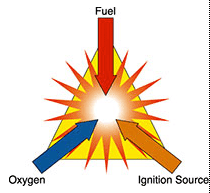
Many commonly encountered gases and vapors (natural gas, methane, propane, hydrogen, alcohols, etc.) are flammable within a range of concentration known as the explosive or flammable range. This range is defined by the lower explosive limit (LEL) and upper explosive limit (UEL) and is different for each flammable gas. For methane, the LEL and UEL in air are 5.0 % and 15.0 % by volume, respectively [NFPA reference]. At concentrations below the LEL, the mixture is too lean (insufficient fuel with respect to oxygen) to sustain combustion, and at concentrations above the UEL, the mixture is too rich (too much fuel with respect to oxygen) to sustain combustion.
Safety instruments using catalytic bead type sensors are intended for use below the LEL, and typically scaled from 0-100 % LEL. This means that the full-scale indication on the monitor is the minimum concentration that could sustain combustion.

While most safety-related instruments focus on the sub-LEL range, there are many applications or industries where it is necessary to measure concentrations of flammable gases and vapors above the LEL. For instance, a utility company trying to pinpoint a gas leak may subject its leak detector to concentrations far above the LEL. Another common application is in landfills, where inspection wells are monitored to track the condition of the landfill or to verify that methane produced in the fill is not migrating off site. In monitoring of these inspection wells, concentrations of methane can be well above the LEL or even above the UEL and are often deficient in oxygen.
For these situations, a catalytic bead type LEL range detector is not suitable, and can indicate dangerously low false readings. Remember, the catalytic bead type sensor must “burn” the gas on the surface of the bead. If the mixture is above the UEL (too rich), the instrument may actually indicate a very low reading or no reading due to insufficient oxygen. In addition, subjecting a catalytic bead sensor to very high gas concentrations can result in damage to the sensor, including loss of sensitivity that can also produce erroneously low readings.
For applications of this type, where very high gas concentrations may be encountered, the most commonly used method of detection is thermal conductivity (TC).
Thermal Conductivity
A thermal conductivity detector is based on the principle that gases differ in their ability to conduct heat.
A TC detector will consist of two elements, typically a pair of wires (filament) or thermistors that are heated above ambient temperature. One of the elements (active) is exposed to the gas sample to be measured, and the second element (reference) is exposed to a reference gas (typically air for this type of instrument).
If the sample gas has a different thermal conductivity as compared to the reference gas, the temperature of the active filament will change as compared to the reference element. As with the catalytic bead type sensor, the resultant temperature change results in a resistance change that is measured with a Wheatstone bridge circuit to produce a digital reading proportional to the gas concentration.
The TC sensor can be used for a variety of gases, and does not require oxygen to operate. Because the thermal conductivity of different gases as compared to air can vary widely, and be either positive or negative in direction, the thermal conductivity detector must be tuned or calibrated for a specific gas or vapor. The most notable advantage of the TC type detector is it’s ability to detect concentrations of flammable gases and vapors up to 100 % by volume, well above LEL and UEL ranges.
|
Sensor Type
|
Measuring Range
|
Advantages
|
Disadvantages
|
|
Catalytic Bead
|
0-100 % LEL
|
Low cost, wide range of flammable gases
|
Requires oxygen, degrades as it’s used, limited measuring range
|
|
Thermal Conductivity
TC |
0-100 % Volume
|
Wide dynamic range, doesn’t need oxygen to operate, immune to catalyst poisoning
|
Doesn’t detect all flammable gases
|

In the past, you may have had to buy a separate instrument in order to obtain each of these sensor types. Fortunately, RKI has developed the GX-2012, which includes both catalytic bead and thermal conductivity sensors, and will automatically switch from a % LEL to a % Volume range.
Most competitive instruments with dual range combustible capability do not have the sophistication to automatically select the appropriate sensor to use based on the gas concentration being encountered. If the instrument does not autorange like the GX-2012, then the user must manually select the range to be monitored, which may require extra precautions to ensure that the readings are accurate or to avoid damaging the catalytic bead sensor. When the GX-2012 detects high levels of methane, the display will dynamically change from the % LEL to the % Volume range. At the same time the catalytic sensor is protected from being exposed to a concentrated sample that is well over scale. This autoranging combustible capability provides users with the flexibility to do general-purpose safety monitoring as well as detection of very high levels of flammable gases and vapors without any extra precautions or procedures.
Ordering Information
The GX-2012 comes in a variety of configurations. Please contact your RKI Distributor for order information.
Download a PDF of this application brief.
Ballast Water Treatment Gas Monitoring
The Issue
Since the development of steel hulled vessels around 120 years ago, water has been used as a ballast material to stabilize vessels at sea. Ballast water is pumped-in to a vessel to maintain safe operating conditions throughout a voyage. This practice reduces stress on the hull, provides stability, improves propulsion and maneuverability, and compensates for weight loss due to fuel consumption and other factors.
While ballast water is essential for safe and efficient modern shipping operations, it may pose serious ecological, economic and health problems due to the great variety of marine species carried in ships’ ballast water. These include bacteria, microbes, small invertebrates, eggs, cysts and larvae of various species. The transferred species may survive to establish a reproductive population in the new host environment, becoming invasive, out-competing native species and multiplying into pest proportions.
The problem of invasive species in ships’ ballast water is largely due to the expanded trade and traffic volume over the last few decades and since the volume of seaborne trade continues to increase, the problem may not yet have peaked. The effects in many areas of the world have been devastating. Data show that the rate of bio-invasions is continuing to increase at an alarming rate and new areas are being invaded all the time.
The spread of invasive species is now recognized as one of the greatest threats to the ecological and the economic well being of the planet. These species are causing enormous damage to biodiversity and the valuable natural resources of the earth. Direct and indirect health effects are becoming increasingly serious and the damage to the environment is often irreversible.
How the Issue is being addressed
In 2004, the International Maritime Organization (I.M.O.) adopted the Ballast Water Control Treaty to require the installation of BWT systems into commercial marine vessels around the world. Basically, all new ships built since 2012 must have a BWT system. And existing ships built prior to 2012, must have a BWT system installed by 2017. This involves approximately 70,000 ships worldwide that must comply with the treaty. And, there are approximately 2,000 to 3,000 ships being built, annually.
Major Applicable Vessels
Ballast Water Treatment Methods
There are a variety of methods that have been proposed and utilized with varying degrees of success to eliminate the organisms in a vessel’s ballast tanks and ballast system.
They are:
Due to the varying degrees of efficiencies for each of the above methods with respect to results versus the volumes of water that can be effectively treated and the energies required, the two most popular
Methods are
Protection
RKI Instruments has portable gas detection instruments as well as fixed gas detection systems that can aid in the protection of life and property against the gas hazards of Ozone (O3), Chlorine (CL2), Hydrogen (H2) and Oxygen (O2) deficiency.
Portable Gas Monitors
Eagle O3 / LEL-H2, Cl2 / O2
Eagle 2 LEL-H2, CL2 / O2
Fixed gas Detection Systems
Beacon 110
Beacon 200
Beacon 410A
Beacon 800
Please contact RKI Instruments for more information regarding The Ballast Water Treatment application.
Compressor Station Monitoring
There are many thousands of gas compressor stations that present the constant potential hazard of accumulating combustible gases.
As natural gas is moved through transmission pipelines from its source to markets in other parts of the country, the pressure needs to be boosted periodically. This typically occurs every 50 – 75 miles. At these intervals, gas arrives at stations where the gas is re-pressurized by a compressor. These facilities are referred to as compressor stations. Each of these stations has applications for gas detection and RKI Instruments has products that are ideally suited to these requirements.

There are basically two types of compressor stations: The large compressor station which houses many compressors inside a (usually metal) building which is often open on both ends and has an air gap between the building and the slab.
The other is skid mounted with one compressor on a slab and may be open or be covered with a metal carport like cover. The open air compressors seldom have onsite gas detection.
Who to Call On
Facilities: Transmission and distribution gas pipeline companies.
People: Operations Engineer, Instruments Engineer or Compressor Maintenance Supervisor. These people are generally located at a corporate or regional office or at the station itself. For prospecting purposes, stop by the station and ask who is responsible for their fixed gas detection instrumentation. Compressor stations can be found on the company web site under “assets map”.
Stationary sensors for the detection of combustible gases are necessary to be placed directly above the compressor. The compressor generates a significant amount of heat and the point of detection can easily reach 140 degrees Fahrenheit or more. Our M2 is especially well suited for this. The sensor can be mounted remotely from the transmitter and be installed directly above the compressor. The transmitter itself is mounted at location convenient to the operator- typically on a wall at eye level. A calibration cup is often mounted permanently to the sensor and tubing is run down next to the sensor head. In this manner, a calibration can be completed easily and safely while maintaining the ideal placement of the sensor itself.
Download a PDF of this application brief.
Ballast Water Treatment Gas Monitoring
The Issue
Since the development of steel hulled vessels around 120 years ago, water has been used as a ballast material to stabilize vessels at sea. Ballast water is pumped-in to a vessel to maintain safe operating conditions throughout a voyage. This practice reduces stress on the hull, provides stability, improves propulsion and maneuverability, and compensates for weight loss due to fuel consumption and other factors.
While ballast water is essential for safe and efficient modern shipping operations, it may pose serious ecological, economic and health problems due to the great variety of marine species carried in ships’ ballast water. These include bacteria, microbes, small invertebrates, eggs, cysts and larvae of various species. The transferred species may survive to establish a reproductive population in the new host environment, becoming invasive, out-competing native species and multiplying into pest proportions.
The problem of invasive species in ships’ ballast water is largely due to the expanded trade and traffic volume over the last few decades and since the volume of seaborne trade continues to increase, the problem may not yet have peaked. The effects in many areas of the world have been devastating. Data show that the rate of bio-invasions is continuing to increase at an alarming rate and new areas are being invaded all the time.
The spread of invasive species is now recognized as one of the greatest threats to the ecological and the economic well being of the planet. These species are causing enormous damage to biodiversity and the valuable natural resources of the earth. Direct and indirect health effects are becoming increasingly serious and the damage to the environment is often irreversible.
How the Issue is being addressed
In 2004, the International Maritime Organization (I.M.O.) adopted the Ballast Water Control Treaty to require the installation of BWT systems into commercial marine vessels around the world. Basically, all new ships built since 2012 must have a BWT system. And existing ships built prior to 2012, must have a BWT system installed by 2017. This involves approximately 70,000 ships worldwide that must comply with the treaty. And, there are approximately 2,000 to 3,000 ships being built, annually.
Major Applicable Vessels
Ballast Water Treatment Methods
There are a variety of methods that have been proposed and utilized with varying degrees of success to eliminate the organisms in a vessel’s ballast tanks and ballast system.
They are:
Due to the varying degrees of efficiencies for each of the above methods with respect to results versus the volumes of water that can be effectively treated and the energies required, the two most popular
Methods are
Protection
RKI Instruments has portable gas detection instruments as well as fixed gas detection systems that can aid in the protection of life and property against the gas hazards of Ozone (O3), Chlorine (CL2), Hydrogen (H2) and Oxygen (O2) deficiency.
Portable Gas Monitors
Eagle O3 / LEL-H2, Cl2 / O2
Eagle 2 LEL-H2, CL2 / O2
Fixed gas Detection Systems
Beacon 110
Beacon 200
Beacon 410A
Beacon 800
Please contact RKI Instruments for more information regarding The Ballast Water Treatment application.
Wastewater Gas Monitoring System
RKI’s tri-sensor head is designed for detection of the hazardous gases typically encountered in wastewater and wet well type applications. The combination sensor head includes reliable long-life sensors for H2S, O2, and flammable gases, as required by NFPA 820 for sewage and wastewater treatment facilities. The sensor housings and tri-sensor head enclosure are 316 stainless steel to provide durability in harsh environments. Optional splash guards are also available for wet or dusty locations.
This unique tri-sensor design integrates 3 sensors into one unique explosion proof housing. This lowers the installation and wiring cost versus traditional single sensor enclosures. Only one conduit needs to be run to the sensors.
This product is also available in a two and four sensor version, with sensors for LEL, Oxygen, H2S, CO, or CO2. Catalytic bead (“pellistor”) and NDIR (non-dispersive infrared) sensor versions are available for LEL detection.
The Beacon 410, four channel, wall mount controller digitally displays the gas name, readings, and status for up to 4 channels. Each channel has 3 fully configurable alarm points. Each channel also has 2 dedicated individual relays for activating external devices like alarm horns, strobes, pumps, fans or other electrical devices. A bank of 5 common relays are also standard. The Beacon 410 powers up to four remote sensors or transmitters.
Download a PDF of this application brief.
Hydrogen Specific Solutions
Hydrogen gas is looked to as a cleaner source of energy for the future. It is also commonly used in many industrial processes. Hydrogen is one of the most explosive gases, and leaking hydrogen cannot be seen or smelled.
RKI Instruments, Inc. offers a unique technology for detecting dangerous levels of hydrogen gas. This technology utilizes a proprietary process to produce a sensor that is selective to hydrogen (no false alarms from other gases or vapors) and virtually immune to traditional catalyst poisons. For instance, semiconductor operations need to detect hydrogen without experiencing nuisance alarms from cleaning solutions containing isopropyl alcohol. Glass manufacturing processes need to detect hydrogen, but also involve silicone, which can poison traditional catalytic bead sensors. RKI’s hydrogen specific sensors are ideal solutions for applications like these.
Download a PDF of this application brief.
Features
Applications
Limited Hot Work gas monitoring for Refineries
Limited Hot Work
RKI’s GP-03, a portable single gas combustible monitor, is being used to minimize the permitting process for what is called, Limited Hot Work. Refineries in Northern California eliminate the need to pre-test areas by using the GP-03 gas monitor.
Limited Hot Work is when any electrical device like laptops, PDA’s, pagers, and cell phones are used in a Class 1, potentially hazardous, flammable or explosive environment. Since these items are usually not intrinsically safe, there is a protocol covering the use of these items at refineries. When any employee or contractor is using any of the above-mentioned items at a refinery, they are issued a portable LEL meter (like the GP-03). As long as the GP-03 is not in alarm (below 10% LEL), it is OK to operate the electrical device.
Method 21 for Tanks with Inert Enclosures
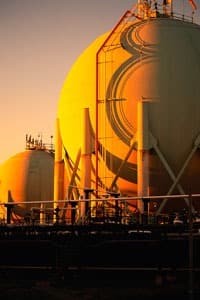
Method 21 is an EPA protocol for monitoring VOC leaks to ensure that those emissions are kept within certain levels to control air pollution. The EAGLE is being used extensively at refineries in Northern California to comply with Bay Area Air Quality Management District (BAAQMD) mandated emissions monitoring. For refineries that have storage tanks with an inert enclosure, monitoring the inert space for hydrocarbons with an instrument that complies with Method 21 is required. RKI has configured an EAGLE specifically for this application.The part number for this particular version of the EAGLE is 72-5101RK-11T and is described as an EAGLE with catalytic sensor (ppm/LEL), internal dilution to add fresh air (oxygen) to the catalytic sensor, and a Teflon sample hose to accommodate the heavier hydrocarbon samples. The EAGLE has been extensively tested against flame ionization detectors (FIDs), which is the most widely used monitoring technology for Method 21. The EAGLE complies with Method 21, is less expensive than an FID, and can be operated for longer periods of time (30 continuous hours on 4 D size alkaline batteries). Also an FID cannot be used for this application due to the inert gas background.
Download a PDF of this application brief.
Purge / Test Procedure Using Model GX-2012
When new natural gas mains are installed or existing mains removed from service, crews must purge the mains with an inert gas to eliminate the potential hazard of a combustible mixture. The most commonly used and preferred purge gas is nitrogen. After the purge is conducted an upstream valve is opened to allow natural gas to enter. A service valve on the line with a stand pipe or diffuser attached is cracked to allow venting gas or nitrogen to escape.
When measurements are taken at stand pipe or diffuser with service valve cracked, RKI recommends use of our “T” fitting adapter, p/n 17-4430RK-01 (as pictured below), for purge testing.
A standard confined space instrument will not adequately test for safe conditions during this process, as the high gas level will overwhelm or damage an LEL sensor, and the sensor will not function in an oxygen-depleted (inert) atmosphere. The RKI Model GX-2012 has been specifically designed for this application, utilizing a robust thermal conductivity (TC) sensor that can measure high gas levels without damage, and does not require oxygen for accurate measurements.
For existing main:
For new main:
All measurements taken at stand pipe or diffuser with service valve cracked. RKI recommends use of our “T” fitting adapter (p/n 17-4430RK-01) for purge testing.
Download a PDF of this application brief.
Oil tankers and LPG carriers
Application
An inert space is one that has been purged with engine exhaust, nitrogen, or other gas mixtures not containing oxygen. It is a common practice on board ships to purge the headspace above petroleum-based product, or in empty product storage spaces to prevent the accumulation of a flammable mixture in the space. For a flammable mixture or fire to exist there are 3 necessary components: fuel, oxygen, and heat or ignition. This is often referred to as the Fire Triangle. By removing the oxygen from the space it eliminates one of the three necessary components thereby preventing the possibility of a fire even if flammable vapors are present. In other words, if there is no oxygen present, there cannot be an explosion.
For these reasons it is important to know both the level of hydrocarbon vapors and oxygen present in the headspace or empty tank. The level of hydrocarbon or flammable vapors in these types of spaces will often exceed the LEL (lower explosive level) and can even be in the percent volume range. It is also important to monitor for oxygen concentrations in these types of spaces to assure a good purge.
Problem
The most common type of meter used to test for flammables utilizes a catalytic type sensor, which will sense combustible gases at LEL levels. This type of catalytic sensor requires oxygen in order to function. If there is no oxygen, or a very low oxygen level is present, the catalytic sensor will not work. The meter will give false readings and a false sense of security. Sometimes a dilution fitting is used with a catalytic sensor to blend some oxygen in with the sample in order to get around this problem. This method can work, but is prone to errors. If the dilution fitting is forgotten or if it is partially or fully plugged, then the operator will get false or inaccurate readings.

Riken Keiki has developed 2 instruments specifically for this type of inert space monitoring, the RI-415 and RX-415. These instruments use an infrared (IR) sensor to measure hydrocarbon vapors over 2 ranges; 0 – 100% LEL and 0 – 100% volume. The RX-415 will also measure oxygen in addition to the 2 ranges of hydrocarbons.
Unlike the catalytic sensor, the IR sensor is ideal for inert monitoring type of applications because the IR sensor does not require oxygen in order to function. The RI-415 and RX-415 instruments utilize a dual IR bench to permit accurate testing over the entire range of a target hydrocarbon up to 100% by volume. The dual autoranging allows the instrument to automatically switch from a 0 – 100% LEL range to a 0 – 100% volume range without any reconfiguring.
Also, for both the single gas model RI-415 and the dual gas (HC/O2) RX-415, there are two versions available. For petroleum type carriers like oil tankers, both models are available in a general hydrocarbon (HC) detection version. For natural gas type applications like LNG or LPG ships, both models have a methane (CH4) version. Both instruments come standard with built in sample drawing pumps and are explosion proof with intrinsically safe designs.
Ordering Information
The RI-415 and RX-415 are competitively priced instruments and come with a 3’ coiled hose and probe. Both models are also available in kit forms, which include additional accessories like longer hoses with fittings, calibration gear, metal storage cases, gas sample bags, and additional filters. When ordering either of these instruments remember to specify which version you want, HC or CH4.
Download a PDF of this application brief.
Backup batteries emitting hydrogen
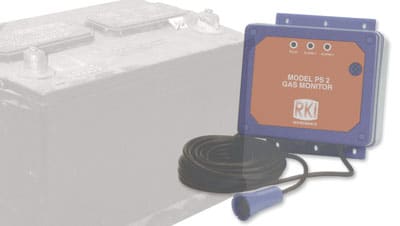
Cellular telephone cell sites, backup battery stations, or any battery rooms.
Application Description:
Since batteries are such an effective energy storage medium for almost any backup power system, many industries use backup battery banks for emergency power. The need for gas monitoring occurs while these backup batteries are being charged. Typically, batteries are continuously trickle charged. After an incident that requires battery use, a higher charge is used to quickly restore the batteries to full capacity. This charging process generates hydrogen gas which is emitted into the battery storage room. The faster the charge rate is, the higher the hydrogen generation rate is.
Backup batteries are normally of the lead acid type, however some are liquid based, gel cells, or even sealed type batteries. No matter which of these battery types they are, hydrogen is generated while being charged.
Hazard:
Hydrogen is a highly flammable gas. The National Fire Protection Association lists the lower explosive level (LEL) for Hydrogen as 4% by volume. If sufficient hydrogen collects in a room, it can potentially explode if ignited. This type of explosive hazard can destroy equipment as well as causing injury or death to personnel. The likelihood of this happening depends on the number of batteries, their charge rate, the size of the room, and the ventilation available for the room. Although this may not be a common occurrence, the potential hazard exists with any type of enclosed backup battery station. This danger can be eliminated by monitoring for a hydrogen buildup, and taking appropriate action if a build up occurs.
RKI’s Solution:
RKI has developed the Model PS2 for this type of application. The PS2 is a low cost, stand alone, continuous gas monitor designed specifically for trouble-free hydrogen gas monitoring. The PS2 uses a long life, low maintenance metal oxide sensor for detection of hydrogen gas. The unit has two alarm levels, typically set to 10% LEL (0.4% volume hydrogen) and 30% LEL (1.2% volume hydrogen). If these alarm levels are exceeded, the PS2 activates a 10 amp relay for each level, and also its own audible and visual alarm. If action is taken at the first alarm level (for example, turning on a ventilation fan in a room to clear out the hydrogen), then the second alarm level should never be exceeded. The second alarm level typically would be used for more drastic action, such as turning on a bigger fan, cutting off the battery charge, or sounding a louder or remote alarm to bring attention to the problem.
The PS2 is a simplified, stand alone fixed system that is easy to install. It comes in a compact wall mounting enclosure, with terminals inside for power and remote alarm connections. The unit can be powered by 24 VDC, or optionally by 115 VAC (which ships with a 6 foot power cable), or 48VDC. Since hydrogen is lighter than air (vapor density for H2 is 0.1), emissions will typically rise. The PS2’s sensor is on the end of a 30 foot cable, so that it can be mounted above the batteries. RKI recommends that a yearly check of sensor response is performed. A low cost calibration kit is available through RKI that will deliver a small amount of hydrogen to the sensor and confirm that the sensor will go into alarm. The PS2’s metal oxide sensor has an extremely long life-span. It is not uncommon for this sensor to last 5 to 10 years or even longer. The PS2 is an economical, trouble-free solution that is ideal for monitoring battery rooms.
Equipment Needed:
73-1020RK-01 PS2 for LEL detection, 24VDC
73-1021RK-01 PS2 for LEl detection, 115VAC
81-PS2H2-LV Cal Kit, PS2, H2, 34L
Download a PDF of this application brief
Illegal Drug Labs Put Responders At Risk
Pre-Entry Gas Detection with the RKI Eagle for Illegal Drug Laboratories and other Hazmat applications
Customer Type:
Police Departments, Drug Task Force Agents, Fire Departments
Application Description:
Illegal drug labs don’t require much space and can be found in a variety of isolated places like apartments, cheap motels, mobile homes, farms, or even vehicles. Fumes from the lab can be toxic for long periods by penetrating surrounding furniture, carpet, and walls. The simple chemicals used to make illegal drugs are relatively harmless by themselves, but during the “cooking process” the mixture can be unstable giving off toxic fumes and creating a potentially flammable and explosive situation. Hydriodic acid, red phosphorus, and anhydrous ammonia are typically the most dangerous chemicals used which can generate toxic levels of phosphine and ammonia gas during the cooking process. In addition to being toxic, red phosphorus is also flammable and explosive if exposed to an ignition source. To make matters worse, the post-manufacturing phase also generates a large volume of hazardous waste. Generally one pound of finished product will produce five to six pounds of hazardous fluids.
These conditions, combined with any booby traps used to protect the drug lab, can be extremely dangerous for any law enforcement agent or response team forced to enter the area.
RKI’s Solution:
RKI offers the EAGLE 2 portable sample-drawing gas monitor that can simultaneously detect for phosphine and combustibles at either low ppm or % LEL levels. The instrument can also be configured with one to six different gases which can include combustibles, oxygen, carbon monoxide, phosphine, and ammonia just to name a few.
The EAGLE 2 is equipped with a superior catalytic sensor that makes it capable of monitoring ppm or % LEL levels of combustible gases. By simply pushing one glove friendly button, the display instantly changes from the % LEL range to the ppm range to detect trace amounts of combustible gases. The EAGLE 2 also has the capability of detecting a wide range of super toxic gases including phosphine and ammonia. Having a single portable instrument is a great advantage to a police officer, drug enforcement agent, or fire department in determining the toxicity or flammability of a drug lab before any personnel enters the area.
The Eagle 2 can also be equipped with a high-sensitivity photoionization detector (PID) for detection of volatile organic compounds (VOCs) at low levels. This function is useful for detection of solvents used in drug production, as well as for detection of accelerants used for arson.
We offer many versions of the EAGLE 2, which can be customized in terms of the sensors included, for law enforcement agencies. Listed below are some of the more common EAGLE 2 configurations which can be used. Please consult the factory for other combinations.
| 722-001 | LEL & PPM Hydrocarbons/O2 |
| 722-005 | LEL & PPM Hydrocarbons/O2/PH3 |
| 725-028 | LEL & PPM HC/O2/CO/PH3/NH3 |
| 723-101-P2 | LEL & PPM HC/O2/0-2000ppm VOCs |
| 724-128-P2 | LEL & PPM HC/O2/0-2000ppm VOCs/PH3 |
| 726-124-P2 | LEL & PPM HC/O2/0-2000ppm VOCs/CO/PH3/NH3 |
Download a PDF of this application brief
LACT (Lease Automatic Custody Transfer)
Applications
When liquid crude is pumped to the surface it is stored in tank batteries waiting for sale to oil companies or pipeline transmission companies such as Enbridge Corporation.
The liquid is pumped through a skid mounted LACT Unit and measured before it is either trucked or piped away from the point of production. The skids are susceptible to leaking combustibles and H2S and must be monitored. If the LACT unit is in an enclosed shelter, O2 monitoring may be required as well.
Typically the skids are owned or leased by the seller (production company) at the point of sale – not far from the wellhead itself. They are generally owned by the production company. Be aware of these when talking to prospective production companies. Also, ask and seek out the manufactures of these LACT units for possible OEM arrangements.
Customer Type
Oil & Gas Industry
RKI’s Solution
RKI has a broad offering of fixed system detector heads and controllers that allows for considerable flexibility to meet the needs of our customers. Typically, an S2, M2 or direct connect sensor will feed into a controller that will initiate a response. If a strobe or beacon light are to be used, it is necessary to mount those high enough that it will be seen from all sides.
The M2 or S2 can send a 4-20mA signal into a controller or PLC. The M2 can be used as a stand alone monitor initiating its own response with its internal relays. It also has a display of real time gas concentrations. A feature of the M2 and S2 is that the sensors can be mounted in a location that is not easily accessible for maintenance, then the transmitter itself placed where it is convenient to calibrate.
These products are well suited for the rugged conditions and extreme temperatures that they will be exposed to.
Oxygen Deficiency Monitoring in Hospitals
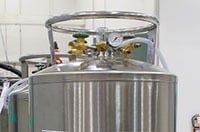 Oxygen Deficiency Monitoring in Hospitals
Oxygen Deficiency Monitoring in HospitalsThe Issue:
Hospitals use and store large quantities of industrial and medical gas cylinders and containers; one common container is for liquid nitrogen. Liquid nitrogen provides temperatures as low as -196°C and it can be used for cryobiology and cryotherapy. The low temperature is used in cryoconservation for the long-term preservation of blood, blood components, other cells, body fluids or tissue samples.
The presence of nitrogen cylinders and containers requires a focus on safety. Liquid Nitrogen rapidly vaporizes to gas at about 700 times the liquid volume. By displacing air the gas may kill by asphyxiation. When the oxygen concentration in air is sufficiently low, a person can become unconscious without any warning symptoms.
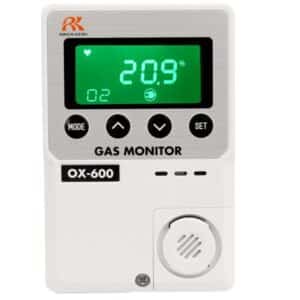
RKI’s Model OX-600, stand alone oxygen monitor units, can monitor individual rooms that store nitrogen containers. An optional remote mount sensor and cable can be equipped which allows the unit to be mounted on the outside of the room, in the hallway, while the extender cable allows the sensor to be located in the area with the nitrogen containers. This allows a person to recognize the condition of a room storing nitrogen prior to entering. Being aware of oxygen deficiency in the presence of compressed nitrogen cylinders or liquid nitrogen containers can save lives.

The OX-600 uses a fast responding low-cost plug-in style galvanic cell sensor. This long life sensor is field- replaceable with no special tools required. The sensor can also be remotely mounted when instrument is supplied with optional sensor cable.
Download a PDF of this application brief
H2 Monitoring Tests Transformer Condition
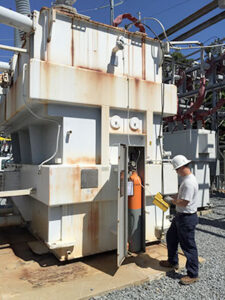 Transformer Condition Tested with an H2 Gas Monitor
Transformer Condition Tested with an H2 Gas MonitorApplication Description
Electrical utilities use large electrical transformers to drop the voltage coming from power lines. These transformers can be huge; the size of a car or greater. The transformers are sealed with an oil bath surrounding all of the electrical coils inside. This oil bath acts as both a coolant and an insulator. At the top of the transformer, there is a headspace that has no oil and instead is filled with nitrogen, generally under a slight positive pressure. For a new transformer, this nitrogen blanket will remain “clean” for a long time. As the transformer ages, and the insulation between the wire coils starts to break down, the high voltage can arc between two adjacent coils of the transformer. When this occurs, the high voltage passes through the oil blanket, and causes the oil to break down. This causes small amounts of flammable vapors to form from the oil, and rise to the top of the transformer to mix with the nitrogen blanket. These flammable vapors consist of a variety of gases, but generally hydrogen is predominant. Periodic testing of the nitrogen blanket for flammable vapors is a good indication of the health of the transformer. If the testing reveals a buildup of flammable vapors, the transformer can be removed from service in a planned manner instead of a catastrophic manner (they can blow up if undetected).
RKI’s Solution
RKI offers “Transformer Gas Testing” versions of our EAGLE portable sample drawing gas monitor for this application. These instruments have a range of 0-5% hydrogen and use a catalytic sensor. This unit also monitors Oxygen. This Eagle for transformer gas testing has two pumps. In this version the probe is connected directly to the transformer tap, and the internal pump is used to extract a sample from the transformer. A second pump is used to pull the required air through the dilution fitting. This version can also be used on transformers with positive or negative pressure. Testing frequencies vary for each Utility, but generally are between 3 to 6 months. A sudden rise of flammables over this time period is an indication of transformer trouble.
Single Gas H2 EAGLE
72-5101RK-TRB
EAGLE for Hydrogen (H2), 0 – 5% volume with 2 pumps for transformer testing
81-5101RK-H2
Calibration kit, EAGLE, 103L cylinder of 50% LEL Hydrogen/Air, demand flow regulator, case & tubing
Dual Gas H2/O2 EAGLE
72-5201RK-TRB
EAGLE for H2 (0 – 5%) / O2, with 2 pumps for transformer gas testing
81-5201RKTR1
Calibration kit, EAGLE, 103L cylinder of 50% LEL H2/Air, 103L cylinder of 100% N2, demand flow regulator, case & tubing
81-5201RKTR1-LV
Cal kit, EAGLE, 34L cylinder 50% LEL H2/Air, 34L cyl 100% N2, dispensing valve, gas bag, case & tubing
Takes samples from positive or negative pressure transformers
Download a PDF of this application brief.
Solutions for Landfill Applications
A landfill is a site for the disposal of waste materials by burial. It is the oldest form of waste treatment. Historically, landfills have been the most common method of organized waste disposal, and remain so in many places around the world.
Landfills may include internal waste disposal sites (where a producer of waste carries out their own waste disposal at the place of production) as well as sites used by many producers. Many landfills are also used for waste management purposes, such as the temporary storage, consolidation and transfer, or processing of waste material (sorting, treatment, or recycling).
A landfill, by the nature of the wastes placed in it, will generate dangerous gases. These gases can pose serious health and safety problems for operators and the community, both during the operation of the landfill and after it has been closed, so facilities must have landfill gas monitoring and control program plans.
Customer Type
Landfill Owners/Operators
Categories of Monitoring
Monitoring data taken at landfills does not necessarily reflect the levels of contamination to which people may be exposed. However, the data usually offers some insight into general air quality, landfill gas migration, possible health hazards and conditions within the landfill itself. In general, monitoring of gases that emanate from landfills falls into the following categories:
|
Typical landfill gas composition |
% (dry volume basis)* |
|
Methane, CH4 |
45-60 |
|
Carbon dioxide, CO2 |
40-60 |
|
Nitrogen, N2 |
2-5 |
|
Oxygen, O2 |
0.1-1.0 |
|
Sulphides, disulphides, mercaptans etc. |
0-1.0 |
|
Ammonia, NH3 |
0.1-1.0 |
|
Hydrogen, H2 |
0-0.2 |
|
Carbon monoxide, CO |
0-0.2 |
|
Trace constituents |
0.01-0.6 |

The Eagle 2 is rugged, reliable, easy to operate and maintain. It is a great solution for just about any portable gas-monitoring situation. Features below include:
Eagle 2 Landfill Configurations
We offer many versions of the Eagle 2, which can be customized in terms of the sensors included. Listed below are some of the more common Eagle 2 configurations for use in Landfill gas detection. Please consult the factory for other combinations.
Part Number / Sensors
723-035-05 / CH4 (IR Auto ranging %LEL/%Vol)/O2/CO2 (IR 0-60%)
724-059-05 / CH4 (IR Auto ranging %LEL/%Vol)/O2/CO/CO2 (IR 0-60%)
724-068-05 / CH4 (IR Auto ranging %LEL/%Vol)/O2/H2S/CO2 (IR 0-60%)
725-106-05 / CH4 (IR Auto ranging %LEL/%Vol)/O2/H2S/CO/CO2 (IR 0-60%)
Download a PDF of this application brief.
Refinery catalyst dumping operations
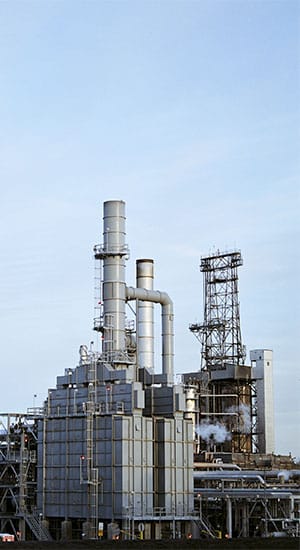 Refinery Catalyst Dumping Operations
Refinery Catalyst Dumping OperationsRefineries use large “cracking towers” as a part of their operations. These towers can be approximately 100 feet tall and are filled with a catalyst which assists the conversion of oil into lighter fuels. Periodically, the catalyst must be removed, the tower cleaned out, and new catalyst added. In order to remove the old catalyst, workers must enter and remain inside the tower wearing full protective gear. As the old catalyst is being removed, flammable and hazardous vapors can be emitted. As a result, a gas monitor must be used to monitor the condition of flammable vapors, oxygen levels, and normally H2S and CO also.
Since the tower is purged with Nitrogen, there is ideally no oxygen present. An increase in the volume of oxygen would mean that the Nitrogen purge is not adequate. Therefore oxygen detection is normally set for an increasing alarm between 2% to 4% volume, to warn of an increasing oxygen situation. For monitoring LEL with a catalytic sensor, a dilution fitting must be used, since the catalytic sensor requires oxygen in order to operate. (Note that an IR sensor cannot be used for this application because it is possible that hydrogen could be one of the flammable gases present, and an IR sensor cannot detect hydrogen).
Normally this testing must be done 24 hours a day for several weeks. Although a continuous monitor can be used, quite often portable monitors are used for this application due to their flexible nature and ease of use. The test area is extremely dirty with fine catalyst dust, and so any sample drawing instrument must utilize appropriate filters to avoid pump and flow problems. It’s also important that a gas monitor’s sample drawing pump be able to draw a sample over 100 feet to test deep within the tower.
EAGLE 2 One To Six Gas Portable Monitor:
 Continuous Operation – The EAGLE 2 can operate continuously from a 115 VAC continuous operation adapter. Also, if desired, it can run from batteries and it will operate for 30 hours from 1 set of Alkalines.
Continuous Operation – The EAGLE 2 can operate continuously from a 115 VAC continuous operation adapter. Also, if desired, it can run from batteries and it will operate for 30 hours from 1 set of Alkalines.The EAGLE 2 has proven itself at many refineries to perform excellently for this application and to hold up well despite the harsh conditions of use.
Download a PDF of this application brief
Fixed System Harsh Environment Sampling
Customer Type:
Wastewater and fresh water plants, landfill, print industry, wineries, power industries, and more.
Application Description:
Detecting hazardous gases in industry can present many challenges. Often, gases found in certain applications present technical challenges such as high temperatures, high pressures and may have some water content, or high humidity. There are a variety of industries and applications where such conditions may exist for detecting flammable gases, oxygen and toxic gases, where traditional gas monitoring equipment cannot deal with the adverse or harsh gas sample conditions. Such adverse conditions can cause short sensor life, if not immediate damage.
Such industries and applications include wastewater, drinking water plants, gas turbines, tunnel monitoring, landfill bar hole analyses, printing press exhaust solvent recovery, wineries, biogas methane, hydrogen sulfide “H2S” scrubber break through and many others.

RKI offers a single or dual sensor Air Aspirator Panel system that is designed to monitor gas atmospheres from extreme conditions with either temperature or pressure challenges. A powerful air aspirator can pull a sample from up to 100 feet away. The sample gas is then filtered and conditioned and passed across one or two different gas detectors. Each detector shares a common calibration and compressed air inlet for aspirated flow. The gas sample is diluted with air after the gas sensors and is returned to a common exhaust reducing the danger of potential hazardous gases entering a safe work space.
System integrity is maintained by using flow fail and drain fail monitoring devices which provides NO (normally open) contacts that activate if the sample or drain lines become blocked, or if the air supply is removed or interrupted. The system also has a back flush capability which reverses the direction of the compressed air to clear a blocked sample line and an integral self draining sample filter to remove water and dirt.
RKI’s Air Aspirator Panel can be used with direct-connect sensors (connected to an RKI controller), or with S Series, S2 and M2 Series transmitters. All transmitters have 4-20mA signals for feeding back to a DCS (Digital Control System), PLC (Programmable Logic Controller), or BMS (Building Management System). The M2 transmitter also has an RS485 Modbus output available. If needed, RKI Instruments can supply a dedicated gas detection controller to provide local alarms, or a 4-20mA output(s) with a variety of dry contacts, making the system very flexible and user friendly. The system can be configured for indoor or outdoor use, is of corrosion resistant construction and can be configured with NEMA 4X enclosure options (stainless steel or plastic enclosure).
Download a PDF of this application brief.
SOLAS – Gas Monitoring Solutions for Marine Applications
Crude Oil Carriers |
LNG / LPG |
Bulk Carriers |
|
 |
 |
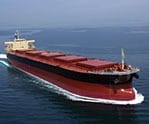 |
 |
Worldwide Service
SOLAS XI-1/7 Compliant Products
Certified instruments:
| Model | ABS | MED | ATEX | CSA | IECEx | CE |
| GX-2009 | • | • | • | • | ||
| GX-2012 | • | • | • | • | ||
| GX-6000 | • | • | • | • | ||
| Eagle 2 | • | • | • | |||
| GX-8000 | • | • | • | |||
| RX-8000 | • | • | • | |||
| RX-515 RX-517 |
• |
OLAS XI-1/7 Compliant Gas Monitors New SOLAS XI-1/7 Regulation Defines Atmospheric Test Instruments for Confined Spaces Pre-entry Measurement
Many vessels are constructed with enclosed spaces (also known as confined spaces) which can pose hazards to personnel required to enter these spaces to perform work: Toxic gases, lack of oxygen and risk of explosion from flammable or combustible gases and vapors. Some examples of this type of space include, but are not limited to, cargo and ballast tanks, hulls, and holds. These risks can be mitigated by conducting pre-entry tests with appropriate multi-gas detector.
Pre-entry measurement: Requirements for a portable multi-gas detector
SOLAS XI-1/7 defines the requirements for gas detectors to be used for this testing:
| Cargo Testing | Confined Space Monitoring | Calibration Station | ||||||||||
| Features | Inert Monitor ing |
High Range H2S | 100% Volume HC | 40m Sample Range |
30m Sample Range |
4 Gas LEL/O2/ CO/H2S |
PID Capability | PPM Hydro-carbon | 40m Sample Range |
30m Sample Range |
Wearable | |
| Model | ||||||||||||
| GX-2009 | • | • | • | |||||||||
| GX-2012 | • | • | • | • | ||||||||
| GX-6000 | • | • | • | • | • | • | ||||||
| Eagle 2 | • | • | • | • | • | • | • | • | • | • | ||
| GX-8000 | • | • | • | |||||||||
| RX-8000 | • | • | • | |||||||||
| RX-515 RX-517 |
• | • | • | • | ||||||||
| Confined Space Monitoring | Calibration Station | ||||||
| Features | 4 Gas LEL/O2/CO/H2S | PID Capability | PPM Hydrocarbon | 40m Sample Range |
30m Sample Range |
Wearable | |
| Model | |||||||
| GX-2009 | • | • | • | ||||
| GX-2012 | • | • | • | • | |||
| GX-6000 | • | • | • | • | • | • | |
| EAGLE 2 | • | • | • | • | • | • | |
| GX-8000 | • | • | |||||
| RX-8000 | |||||||
| RX-515 RX-517 |
|||||||
| Cargo Testing | Confined Space Monitoring | Calibration Station | ||||||||||
| Features | Inert Monitor ing |
High Range H2S | 100% Volume HC | 40m Sample Range |
30m Sample Range |
4 Gas LEL/O2/ CO/H2S |
PID Capability | PPM Hydro-carbon | 40m Sample Range |
30m Sample Range |
Wearable | |
| Model | ||||||||||||
| GX-2009 | • | • | • | |||||||||
| GX-2012 | • | • | • | • | ||||||||
| GX-6000 | • | • | • | • | • | • | ||||||
| Eagle 2 | • | • | • | • | • | • | • | • | • | • | ||
| GX-8000 | • | • | ||||||||||
| RX-8000 | • | • | • | • | ||||||||
| RX-515 RX-517 |
• | • | • | • | ||||||||
| Cargo Testing | Confined Space Monitoring | Calibration Station | |||||||||
| Features | Inert Monitor ing |
100% Volume HC | 40m Sample Range |
30m Sample Range |
4 Gas LEL/O2/ CO/H2S |
PID Capability | PPM Hydro-carbon | 40m Sample Range |
30m Sample Range |
Wearable | |
| Model | |||||||||||
| GX-2009 | • | • | • | ||||||||
| GX-2012 | • | • | • | • | |||||||
| GX-6000 | • | • | • | • | • | • | |||||
| Eagle 2 | • | • | • | • | • | • | • | • | • | ||
| GX-8000 | • | • | • | • | • | ||||||
| RX-8000 | • | • | • | ||||||||
| RX-515 RX-517 |
• | • | • | ||||||||
Gas Monitoring for Sterilization / Disinfection Processes
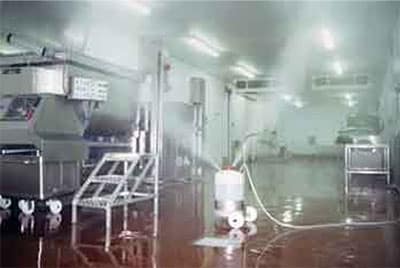
RKI offers portable and fixed system solutions for hydrogen peroxide, chlorine dioxide, and ozone depending on the need.
| Hydrogen Peroxide
(H2O2) is a colorless liquid at room temperature with a bitter taste. Small amounts of gaseous hydrogen peroxide occur naturally in the air. Hydrogen peroxide is unstable, decomposing readily to oxygen and water with release of heat. Although nonflammable, it is a powerful oxidizing agent that can cause spontaneous combustion when it comes in contact with organic material. Hydrogen peroxide is found in many households at low concentrations (3-9%) for medicinal applications and as a bleach for hair and clothing. In other industries, hydrogen peroxide is used in higher concentrations as a bleach for textiles and paper, as a rocket fuel component, and for producing foam rubber and organic chemicals. |
Chlorine Dioxide
(ClO2) is a yellow-green gas with an odor similar to chlorine with excellent distribution, penetration and sterilization properties due to its gaseous nature. Although chlorine dioxide has chlorine in its name, its properties are very different, much like carbon dioxide is different than elemental carbon. Chlorine dioxide has been recognized as a disinfectant since the early 1900s and has been approved by the US Environmental Protection Agency (EPA) and the US Food and Drug Administration (FDA) for many applications. It has been demonstrated as an effective broad spectrum, anti-inflammatory, antibacterial, fungicidal, and virucidal agent, as well as a deodorizer.Exposure Symptoms Irritation of eyes, nose & throat; cough, wheezing, chronic bronchitisRespirator Recommendations Begin at 1 ppm |
Ozone
(O3) is gaseous molecule primarily found in Earth’s upper atmosphere. It is a pale blue gas with a pungent smell similar to chlorine. Ozone is a powerful oxidant. With its third oxygen molecule, it is able to destroy germs, viruses, and microbes that may cause surface or air contamination.Exposure Symptoms Cough, throat irritation, chest pains from inflammation, wheezing, shortness of breathRespirator Recommendations Begin at 0.1 ppm |
|||
Exposure Limits |
|||||
| NIOSH | ACHIH | OSHA | NIOSH | OSHA | NIOSH | OSHA | |||
| 8 hours | IDLH | 8hr TWA | 15 min STEL | 8hr TWA | 15 min STEL |
| 1 ppm | 75 ppm | 0.1 ppm | 0.3 ppm | 0.1 ppm | 0.3 ppm |

The EAGLE is a 6-channel sample-drawing portable monitor that can be configured to detect hydrogen peroxide, chlorine dioxide, ozone and other gases if needed.
0 – 3.00 ppm and 0.02 resolution for H2O2
(lowest initial reading is 0.18 ppm)
0 – 1.00 ppm and 0.01 resolution for ClO2
(lowest initial reading is 0.06 ppm)
0 – 1.00 ppm and 0.01 resolution for O3
(lowest initial reading is 0.06 ppm)
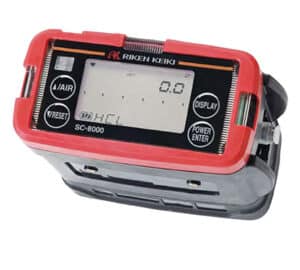
The SC-8000 is a single gas portable monitor with an internal sampling pump and a range of:
0 – 3.00 ppm and 0.02 resolution for H2O2
( lowest initial reading is 0.09 ppm)
0 – 1.00 ppm and 0.01 resolution for O3
(lowest initial reading is 0.03 ppm)

The GD-70D smart transmitter has the ability to continuously monitor as a fixed system. It has alarm indications and alarm relays that can be used for ventilation or other automated responses.
0 – 3.00 ppm and 0.02 resolution for H2O2
0 – 0.6 ppm and 0.01 resolution for O
Ordering Information
References: The National Institute for Occupational Safety and Health (NIOSH); Agency for Toxic Substances and Disease Registry; CDC
Resources:
SC-8000 Web Page
Click HERE for PDF of this announcement
Resources
© 2025 RKI Instruments. All Rights Reserved | Gas Detectors | Portable Gas Monitors | Gas Sensors